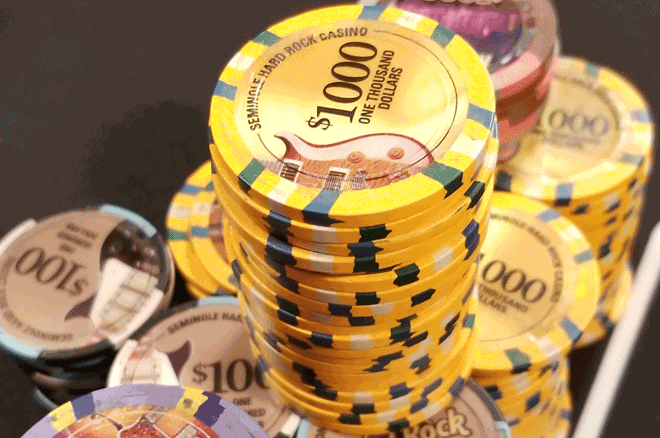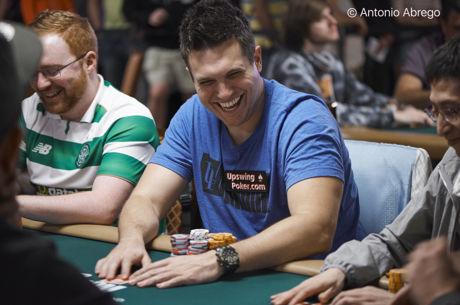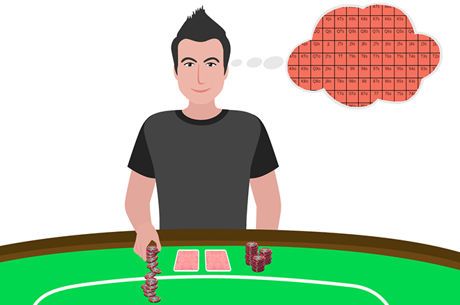What You Must Know Before Check-Raising

Table Of Contents
Players that don't check-raise are easy to beat.
If you won't check-raise me, there are only two possible outcomes when I bet:
- You fold and I win the pot.
- You call and take a turn card out of position.
You, therefore, fold away all of your equity or allow me to realize all of mine. Neither of these options are great for you. And it gets worse if I know you won't check-raise, in which case I can exploit you with a substantial frequency of value bets and bluffs.
The following list of concepts to know before check-raising focuses on big blind vs button play. But most of the advice will apply to other positions as well.
it gets worse if I know you won't check-raise, in which case I can exploit you with a substantial frequency of value bets and bluffs.
1. Range Considerations
The first thing to consider is how each player's range interacts with the cards on the flop. Avoid check-raising on flops that heavily favor your opponent's range and attack boards that favor your own range.
For example, suppose you raise under the gun (6-handed) and get called by the player in the big blind. As the preflop aggressor, you have far more strong hands in your range than the big blind, which gives you a range advantage going into the flop.
However, a typical big blind defense range includes some hands you would not play from under the gun (like 9x7x suited or 4x3x suited). Depending on the flop, the big blind's range can catch up, occasionally taking over the range advantage, but most flops will favor you as the preflop aggressor.
Here are a few examples of flops that should never be check-raised by the Big Blind because they heavily favor the in position preflop aggressor:
- K♣J♥10♠
- Q♥J♦10♠
- A♥A♠K♥
On the other hand, here are a few flops that warrant a check-raising range from the Big Blind:
- 9♥7♠5♥
- 6♠4♦3♥
- 10♦6♠4♥
2. C-Bet Frequencies And Sizes
Your opponent's c-bet size and frequency greatly impacts what your check-raise range should look like.
Your opponent's c-bet size and frequency greatly impacts what your check-raise range should look like.
As you gather information about your opponent’s c-betting strategy, you can adjust your check-raising strategy to beat them. If they c-bet relatively infrequently, respond by check-raising conservatively. If they c-bet often, check-raise with a wider-than-usual range.
The bet size matters a lot too. Small c-bet sizes are often indicative of a relatively wide and merged range, which allows the big blind to check-raise more often. Large c-bet sizes usually coincide with a more polarized range, which is best countered with either a call or fold --- not a raise.
3. Balancing
When you check-raise, it's important to have at least a somewhat well-balanced range that includes both strong hands and bluffs, especially against tough competition.
Consider an extreme example: a player in the big blind that only check-raises when he flops two pair or a set. This player’s strategy is exploitable in a couple key ways:
When you check-raise, it's important to have at least a somewhat well-balanced range that includes both strong hands and bluffs
- The in position player can confidently fold whenever he gets check-raised, continuing with only hands that beat two pair.
- When the big blind check-calls, the in position player can barrel the turn and river at a high frequency because the big blind would have check-raised if he had a strong hand.
To avoid getting exploited like this, you need to include both strong hands and bluffs (usually semi-bluffs of some kind) in your check-raising range. Note that the exact optimal bluff-to-value ratio depends on your bet size, which you can learn more about here.
Check-Raise Wrap-Up
Next time you consider check-raising on the flop, go over this checklist and adjust your range accordingly:
- Examine the flop texture and judge which players' range it hit harder.
- Consider the bet-size used by your opponent and their c-bet frequency (if available).
- Balance your check-raising range with the appropriate number of value bets and bluffs given the size of your raise.
With these points in mind, you should have no trouble structuring your own check-raising ranges in the appropriate spots.
Want to make quick & profitable poker decisions in 30 seconds or less? Get the $7 Postflop Game Plan mini-course and start turning “I don’t know what to do here” spots into money-making situations.
Click here to learn more!
Sponsor generated content by Upswing Poker








